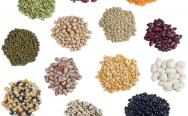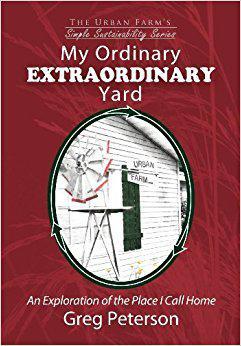GMO, Hybrid & Heirloom Seeds—Just What is the Difference?
By Greg Peterson
 Often, people ask me if the Urban Farm trees and plants are genetically modified (GM), or how they can know if a plant or seed they are buying is genetically modified. Generally speaking, small farmers and home gardeners are immune to the marketing of GM seeds and plants because the companies that do the work to genetically engineer plants and seeds are not interested in selling to such a small market. Yay for us…for now. Here is the most current list of GM crops on the market.
Often, people ask me if the Urban Farm trees and plants are genetically modified (GM), or how they can know if a plant or seed they are buying is genetically modified. Generally speaking, small farmers and home gardeners are immune to the marketing of GM seeds and plants because the companies that do the work to genetically engineer plants and seeds are not interested in selling to such a small market. Yay for us…for now. Here is the most current list of GM crops on the market.
In an effort to clear up any seeds of confusion I am dedicating this column to distinguishing the three distinct “types” of seeds: open pollinated (or heirloom), hybrids and GMOs (genetically modified organisms). Heirloom seeds are left just as Mother Nature intended, while the hybrids and GMOs involve some level of human intervention.
Open pollinated or heirloom seeds as they are sometimes called, are seeds that have been passed from generation to generation and have stayed true to their ancestral roots by consistently producing the same offspring. This results in plants that genetically are hundreds, or thousands of years old, each developing a resistance to the diseases and pests with which it evolved. When this type of seed is planted and allowed to grow and go to seed again, it will always produce the same plant.
Seed banks serve a vital role in the preservation of the genetic diversity embodied in the open pollinated species. Organizations such as The Southern Seed Legacy, Seed Savers International and Rocky Mountain Seed Alliance have created systems and methods to preserve open pollinated seeds and cultivars. Of particular interest to me is the way Cornell University in Geneva, New York maintains an incredibly diverse collection of apple and grape plants, boasting over 2,500 apple cultivars and 1,300 grape cultivars.
Hybrid seeds have their own magic. I find that most people are familiar with the term hybrid, which is similar to the process that occurs in nature called natural selection. The process is simple: plant A cross-pollinates with plant B, together creating plant C. In essence this is how plants and animals slowly evolve. Here is where it gets interesting — about 150 years ago a gentleman named Gregor Mendel discovered that different pea plants (Pisum sativum) carried different traits and that by selectively breeding these plants he could bring out or, conversely, suppress these different traits. The value in this method is that the “positive” traits in a plant or animal can be brought out, while the “negative” traits can be suppressed.
So now onto real life…a farmer has a really sweet watermelon (A) but it has a lot of seeds, and watermelon B has a great shelf life. By selectively breeding these two plants the farmer finds that the resulting watermelon magically doesn’t have seeds, and he gets a sweet fruit with a long shelf life. The unfortunate part of this process is that hybridized plants often make seeds that are not necessarily viable for future generations. So, saving seeds can be somewhat futile or, of course, impossible with “seedless watermelons.” That being said, magic can happen in saving hybrid seeds, so if you want to experiment with them, go for it and see what you produce.
I also want to clear up some internet mistruths that are being spread. Hybrids are NOT genetically modified. It has been stated that humans have been genetically modifying seeds for hundreds of years, but this is simply not true. Hybrids cross pollinate with only those plants that they are sexually compatible with. Period!
Genetic modification or transgenic is a process by which a gene is taken from one species such as a fish and transported, typically with a virus, to another species such as a tomato. This is a process that does NOT exist in nature and only happens in a laboratory. For a great primer on this topic, see the book Genetically Engineered Food: Changing the Nature of Nature, by Martin Teitel & Kimberly Wilson.
Another term you may have seen applied to seeds is organic. Simply put, organic seeds are those that have been grown in a manner that is consistent with the U.S. Department of Agriculture’s Organic Standards. There are organically grown heirloom and hybrid seeds. However, under the current organic guidelines you will not see organically grown GMO seeds because by definition they are excluded.
All this being said, my go to for seeds is the open pollinated seed. This gives me the long term effect of essentially free plants growing year after year in the yard here at the Urban Farm. I let nature spread the seeds and then, next year and for many years to come, I have a nice crop of plants growing with little effort on my part. Some people call them weeds—I call them volunteers that lighten my workload. Yay for the lazy gardener in me
Where to get Good Seeds!
- Sierra Seeds – http://sierraseeds.org/
- Siskiyou Seeds – http://www.siskiyouseeds.com/
- Sustainable Seeds – http://sustainableseedco.com/
- Uprising – http://www.uprisingorganics.com/
- Adaptive – https://www.adaptiveseeds.com/
- Wild Garden Seeds – https://www.wildgardenseed.com/
- Native Seeds/SEARCH – http://www.nativeseeds.org/
- Southern Exposure – http://www.southernexposure.com/
- Hudson Valley – http://www.seedlibrary.org/
- Fed Co – http://www.fedcoseeds.com/
- Earthly Delights – http://earthlydelightsfarm.com/seeds/
- Seed Savers – http://www.seedsavers.org/
- Fruition – http://www.fruitionseeds.com/
- Nichols – https://www.nicholsgardennursery.com/
- Rocky Mountain Seeds – http://rockymountainseeds.org/resources/seeds







